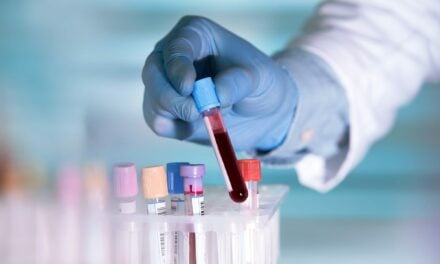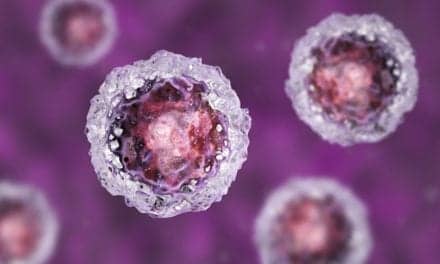Cedars-Sinai Cancer investigators developed a new nanotechnology-based test that can detect and profile prostate cancers—even in microscopic amounts. Their work, published in the peer-reviewed journal nanotoday, suggests that the liquid biopsy test could spare many patients unnecessary treatment-related side effects, directing them instead to effective therapies that could prolong their lives.
“This research will revolutionize the liquid biopsy in prostate cancer,” says Edwin Posadas, MD, medical director of the Urologic Oncology Program and co-director of the Experimental Therapeutics Program in Cedars-Sinai Cancer. “The test is fast, minimally invasive and cost-effective, and opens up a new suite of tools that will help us optimize treatment and quality of life for prostate cancer patients.”
Prostate Cancer
Cancer of the prostate, a walnut-sized gland just below the bladder, is the most common cancer and second-leading cause of cancer death among U.S. men.
The test developed by Posadas and co-investigators isolates and characterizes extracellular vesicles (EVs) from blood samples. EVs are microscopic packets of protein and genetic material that are shed by cells. The EV Digital Scoring Assay can pull these EV packets from the blood with unprecedented efficiency and analyze them in a manner that is faster than any currently available test.
The investigators tested blood samples from 40 patients with prostate cancer and found that the test was able to distinguish cancer localized to the prostate from cancer that had spread to other parts of the body.
Posadas envisions this test being used to help patients who have their prostate gland removed and later experience a rise in levels of prostate-specific antigen (PSA) in their blood. This happens in about 30% of post-surgical patients, and elevated PSA levels can indicate cancer recurrence.
If a remnant of the cancer has been left behind in the prostate bed, where the prostate gland once was, Posadas says focused radiation therapy can cure the disease or delay progression. But that treatment is not without risks.
“The bladder and rectum are near the prostate bed and can be damaged during the course of radiation therapy,” Posadas says. “The risk is only worth it if a man is going to benefit.”
If microscopic cancer deposits have spread outside the prostate area, focused radiation treatment will not prevent disease progression. These deposits, called micro-metastases, are not always detectable, even via the most advanced imaging, but investigators were able to detect them using the EV test.
“This would allow many patients to avoid the potential harms of radiation that isn’t targeting their disease, and instead receive systemic therapy that could slow disease progression,” Posadas says.
In retrospective case studies, investigators tested blood samples taken over time from three prostate cancer patients, including one patient who had undergone focused radiation treatments.
“At the time he was being treated, I was concerned that he was not benefiting,” Posadas says. “And the test results mirrored his clinical behavior and showed that, indeed, the treatments were not effective because he had micro-metastatic disease.”
Progress at Cedars-Sinai Cancer
The test is the latest in a yearslong series of Cedars-Sinai Cancer developments involving EVs. Posadas says that it could also be adapted to guide treatment as prostate cancer therapies become more targeted at the molecular level, ultimately extending patients’ lives. Posadas and his team of investigators are now working to further refine the test so that it can be studied in greater detail.
“This type of liquid biopsy, coupled with innovations such as our Molecular Twin initiative, is key to next-generation precision medicine that represents the newest frontier in cancer treatment,” says Dan Theodorescu, MD, PhD, director of Cedars-Sinai Cancer and the PHASE ONE Distinguished Chair. “And the type of progress we are making is only possible at an institution such as Cedars-Sinai Cancer, where we have patients, clinicians, scientists and creative engineering minds converging as one unit to address the most challenging problems in cancer.”
Posadas and the team aim to work with local and national partners and hope to see the test come into wide clinical practice in the near future.





